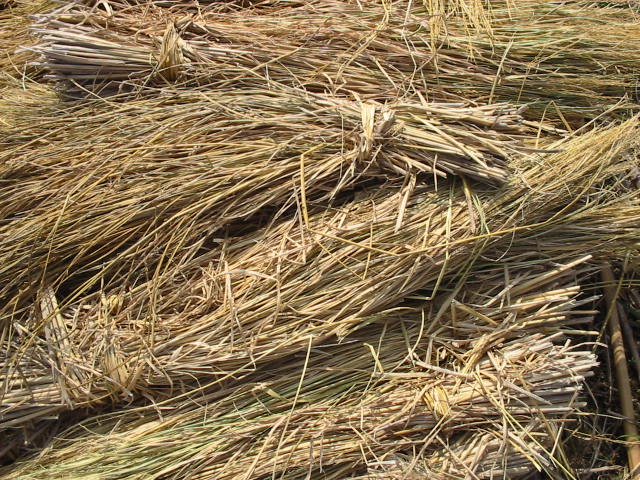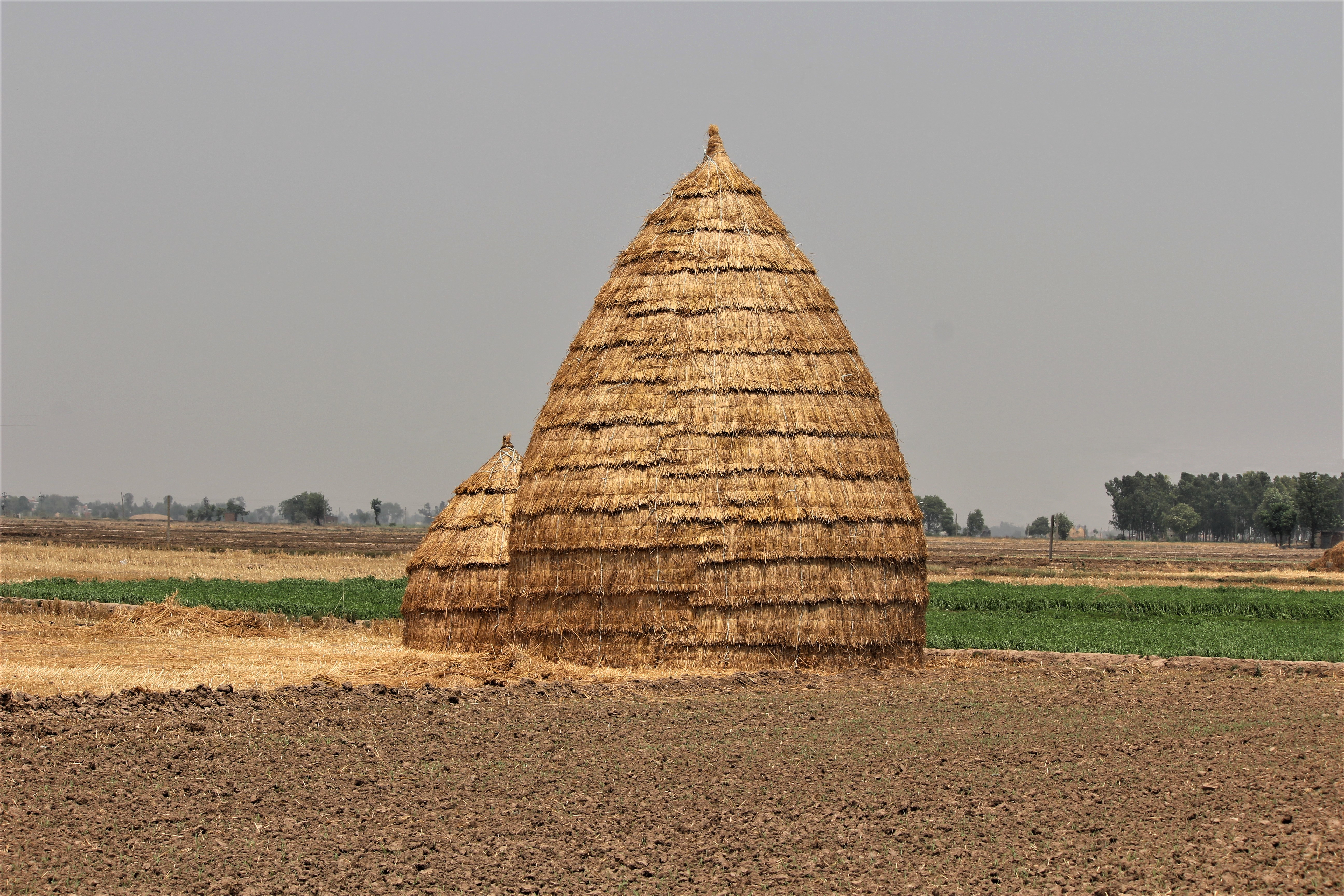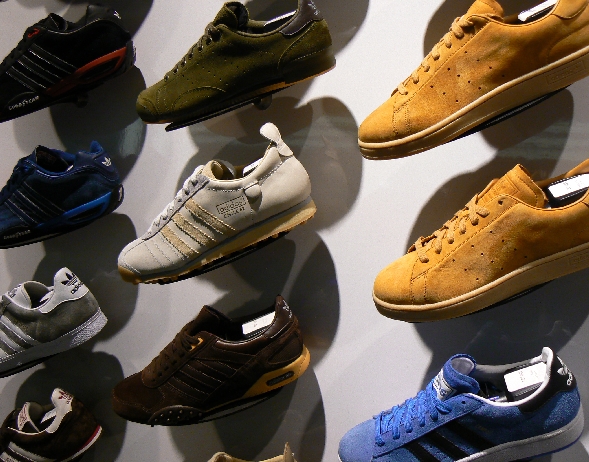|
Jipsin
() are Korean traditional sandals made of straw. Koreans have worn straw sandals since ancient times. They are categorized as , shoes with a short height, and the specific name can vary according to the materials used, as with , , , and . In the Joseon period, were worn mostly by commoners, working farmers. The shoes were meant for walking, and wore down quickly. A full day's worth of walking would often wear out a pair. As such, most people knew how to make the shoes themselves. This was even true of middle and even upper-class women; it was not "considered lowering for her to engage in making of straw shoes". They are very similar, especially in form, to '' mituri'', which are also traditional Korean woven shoes. The difference lies primarily in materials; ''jipsin'' are typically made of straw, while ''mituri'' are made from hemp, '' Cyperus exaltatus'' (왕골), or cattail. Gallery File:Korea-Jipsin and other craft.jpg, A man (left) making ''jipsin'' (2008) File:Korean ... [...More Info...] [...Related Items...] OR: [Wikipedia] [Google] [Baidu] |
Mituri
''Mituri'' () are traditional Korean woven shoes. They could be made using a variety of techniques and materials; some styles were seen as more luxurious, and therefore reserved for the upper class, although both lower and upper-class people wore the shoes. The shoes could be dyed in a variety of patterns and colors. They are very similar, especially in form, to ''jipsin'', which are also traditional Korean woven shoes. The difference lies primarily in materials; ''jipsin'' are typically made of straw, while ''mituri'' are made from a variety of materials, including hemp, ''Cyperus exaltatus'' (), or Typha, cattail. The shoes wore down easily; when going on a long journey, people would bring along extra pairs of ''mituri'', depending on the expected amount of walking needed. A famous example of ''mituri'' is those from the tomb of Lee Eung-tae. The shoes were woven using a mixture of hemp and human hair; they were created ritually by Lee's wife, likely to pray for Lee's recover ... [...More Info...] [...Related Items...] OR: [Wikipedia] [Google] [Baidu] |
Saekki
() is a rope made of woven straw. It was an important household item used in pre-modern agricultural Korea. History Grey stoneware (hard pottery) from the Proto–Three Kingdoms era (2nd century BCE‒3rd century CE) demonstrates evidence of . Ceramic sculptures of (straw shoes) from Silla (57 BCE‒935 CE) indicates the usage of in this period. During the Joseon era (1392–1897), (a guild of the tribute merchants of ropes) was one of the (guilds of tribute merchants, the government-licensed purchasing agents) that had monopolistic rights for supplying government requirements. During the Japanese forced occupation (1910–1945), a large amount of along with (straw bags) were looted for military use by the Imperial Japanese Army. was widely used until the 1960s. In the 1970s, the use of waned with the spread of plastic, vinyl, and synthetic fiber ropes. faced a resurgence at the end of the 20th century due to growing interest in traditional handicraft in recent de ... [...More Info...] [...Related Items...] OR: [Wikipedia] [Google] [Baidu] |
Straw Objects
Straw is an agricultural byproduct consisting of the dry stalks of cereal plants after the grain and chaff have been removed. It makes up about half of the yield by weight of cereal crops such as barley, oats, rice, rye and wheat. It has a number of different uses, including fuel, livestock bedding and fodder, thatching and basket making. Straw is usually gathered and stored in a straw bale, which is a bale, or bundle, of straw tightly bound with twine, wire, or string. Straw bales may be square, rectangular, star shaped or round, and can be very large, depending on the type of baler used. Uses Current and historic uses of straw include: Animal feed Straw may be fed as part of the roughage component of the diet to cattle or horses that are on a near maintenance level of energy requirement. It has a low digestible energy and nutrient content (as opposed to hay, which is much more nutritious). The heat generated when microorganisms in a herbivore's gut digest st ... [...More Info...] [...Related Items...] OR: [Wikipedia] [Google] [Baidu] |
Straw
Straw is an agricultural byproduct consisting of the dry wikt:stalk, stalks of cereal plants after the grain and chaff have been removed. It makes up about half of the crop yield, yield by weight of cereal crops such as barley, oats, rice, rye and wheat. It has a number of different uses, including fuel, livestock bedding and fodder, thatching and basket making. Straw is usually gathered and stored in a straw bale, which is a wikt:bale, bale, or bundle, of straw tightly bound with twine, wire, or string. Straw bales may be square, rectangular, star shaped or round, and can be very large, depending on the type of baler used. Uses Current and historic uses of straw include: Animal feed Straw may be fed as part of the roughage component of the diet to cattle or horses that are on a near maintenance level of energy requirement. It has a low digestible energy and nutrient content (as opposed to hay, which is much more nutritious). The heat generated when microorganisms in a h ... [...More Info...] [...Related Items...] OR: [Wikipedia] [Google] [Baidu] |
Hanbok
The hanbok () is the traditional clothing of the Koreans, Korean people. The term ''hanbok'' is primarily used by South Koreans; North Koreans refer to the clothes as (). The clothes are also worn in the Korean diaspora. Koryo-saram—ethnic Koreans living in the lands of the former Soviet Union—also retained a hanbok tradition. Koreans have worn hanbok since antiquity. The earliest visual depictions of hanbok can be traced back to the Three Kingdoms of Korea period (57 BCE to 668 CE) with roots in the Yemaek, Proto-Koreanic people of what is now Geography of North Korea, northern Korea and Manchuria. The clothes are also depicted on tomb murals from the Goguryeo period (4th to 6th century CE), with the basic structure of the hanbok established since at latest this period.The Dreams of the Living and the Hopes of the Dead-Goguryeo Tomb Murals, 2007, Ho-Tae Jeon, Seoul National University Press The ancient hanbok consisted of a (top), (trousers), (skirt), and the ' (coat). T ... [...More Info...] [...Related Items...] OR: [Wikipedia] [Google] [Baidu] |
Sandals
Sandals are an open type of shoe, consisting of a Sole (shoe), sole held to the wearer's foot by straps going over the instep and around the ankle. Sandals can also have a heel. While the distinction between sandals and other types of footwear can sometimes be blurry (as in the case of ''Huarache (shoe), huaraches''—the woven leather footwear seen in Mexico, and peep-toe pumps), the common understanding is that a sandal leaves all or most of the foot exposed. People may choose to wear sandals for several reasons, among them comfort in warm weather, economy (sandals tend to require less material than shoes and are usually easier to construct), and as a fashion choice. Usually, people wear sandals in warmer climates or during warmer parts of the year in order to keep their feet cool and dry. The risk of developing athlete's foot is lower than with enclosed shoes, and the wearing of sandals may be part of the Therapy, treatment regimen for such an infection. Name The English la ... [...More Info...] [...Related Items...] OR: [Wikipedia] [Google] [Baidu] |
Korean Footwear
Korean may refer to: People and culture * Koreans, people from the Korean peninsula or of Korean descent * Korean culture * Korean language **Korean alphabet, known as Hangul or Korean **Korean dialects **See also: North–South differences in the Korean language Places * Korean Peninsula, a peninsula in East Asia **North Korea **South Korea Other uses *Korean Air, flag carrier and the largest airline of South Korea See also *Korean War, 1950-present war between North Korea and South Korea; ceasefire since 1953 *Names of Korea, various country names used in international contexts *History of Korea The Lower Paleolithic era on the Korean Peninsula and in Manchuria began roughly half a million years ago. Christopher J. Norton, "The Current State of Korean Paleoanthropology", (2000), ''Journal of Human Evolution'', 38: 803–825. The earl ..., the history of Korea up to 1945 * {{disambiguation Language and nationality disambiguation pages ... [...More Info...] [...Related Items...] OR: [Wikipedia] [Google] [Baidu] |
Waraji
() are light tie-on sandals, made from ropemaking fibers (usually straw), that were the standard footwear of the common people in Japan. Use resemble other forms of traditional Japanese footwear, such as zori and geta, with a few key differences. They were historically the simplest form of outdoor footwear (sandals of any type were not worn indoors). , due to their cheap and rustic nature, are considered to be a very informal type of footwear, and are not worn with formal kimono. They are typically worn with socks, and are woven so that the wearer's toes generally protrude slightly over the edge of the shoe. were once common footwear in Japan. There are records of in the Heian period (794–1185 CE), with the possibility of having existed before this time. In the Edo period (1603–1867 CE), geta were worn in cities, but anyone making a long journey wore . (sponsored article) They were also worn for energetic or prolonged labour. Their light weight and grip were va ... [...More Info...] [...Related Items...] OR: [Wikipedia] [Google] [Baidu] |
List Of Shoe Styles
This is a list of shoe styles and designs. A shoe is an item of footwear intended to protect and comfort the human foot while doing various activities. Shoes are also used as an item of decoration. The design of shoes has varied enormously through time and from culture to culture, with appearance originally being tied to function. Additionally, fashion has often dictated many design elements, such as whether shoes have very high heels or flat ones. Contemporary footwear varies widely in style, complexity and cost. Shoemaking is the process of making footwear. Originally, shoes were made one at a time by hand. Traditional handicraft shoemaking has now been largely superseded in Quantity, volume of shoes produced by industrial mass production of footwear, but not necessarily in Quality (business), quality, attention to detail, or Artisan, craftsmanship. Shoe styles Shoe designers have described a very large number of shoe styles, including the following: * Abaca slippers * * * ... [...More Info...] [...Related Items...] OR: [Wikipedia] [Google] [Baidu] |
Sandal
Sandals are an open type of shoe, consisting of a sole held to the wearer's foot by straps going over the instep and around the ankle. Sandals can also have a heel. While the distinction between sandals and other types of footwear can sometimes be blurry (as in the case of '' huaraches''—the woven leather footwear seen in Mexico, and peep-toe pumps), the common understanding is that a sandal leaves all or most of the foot exposed. People may choose to wear sandals for several reasons, among them comfort in warm weather, economy (sandals tend to require less material than shoes and are usually easier to construct), and as a fashion choice. Usually, people wear sandals in warmer climates or during warmer parts of the year in order to keep their feet cool and dry. The risk of developing athlete's foot is lower than with enclosed shoes, and the wearing of sandals may be part of the treatment regimen for such an infection. Name The English word ' derives under influence from ... [...More Info...] [...Related Items...] OR: [Wikipedia] [Google] [Baidu] |
Typha
''Typha'' is a genus of about 30 species of monocotyledonous flowering plants in the family Typhaceae. These plants have a variety of common names, in British English as bulrushStreeter D, Hart-Davies C, Hardcastle A, Cole F, Harper L. 2009. ''Collins Flower Guide''. Harper Collins or (mainly historically) reedmace, in American English as cattail, or punks, in Australia as cumbungi or bulrush, in Canada as bulrush or cattail, and in New Zealand as raupō, bullrush, cattail or reed. Other taxa of plants may be known as bulrush, including some Cyperaceae, sedges in ''Scirpus'' and related genera. The genus is largely distributed in the Northern Hemisphere, where it is found in a variety of wetland habitats. The rhizomes are edible, though at least some species are known to accumulate toxins and so must first undergo treatment before being eaten. Evidence of preserved starch grains on grinding stones suggests they were already eaten in Europe 30,000 years ago. Description ''Typ ... [...More Info...] [...Related Items...] OR: [Wikipedia] [Google] [Baidu] |
Encyclopedia Of Korean Culture
The ''Encyclopedia of Korean Culture'' () is a Korean-language encyclopedia published by the Academy of Korean Studies and DongBang Media Co. It was originally published as physical books from 1991 to 2001. There is now an online version of the encyclopedia that continues to be updated. Overview On September 25, 1979, a presidential order (No. 9628; ) was issued to begin work on compiling a national encyclopedia. Work began on compiling the encyclopedia on March 18, 1980. It began publishing books in 1991. The encyclopedia's first version was completed, with 28 volumes, in 1995. It continued to be revised beginning in 1996. In 2001, the digital edition EncyKorea was published on CD-ROM A CD-ROM (, compact disc read-only memory) is a type of read-only memory consisting of a pre-pressed optical compact disc that contains computer data storage, data computers can read, but not write or erase. Some CDs, called enhanced CDs, hold b ... and DVD. It launched an online version in 20 ... [...More Info...] [...Related Items...] OR: [Wikipedia] [Google] [Baidu] |






